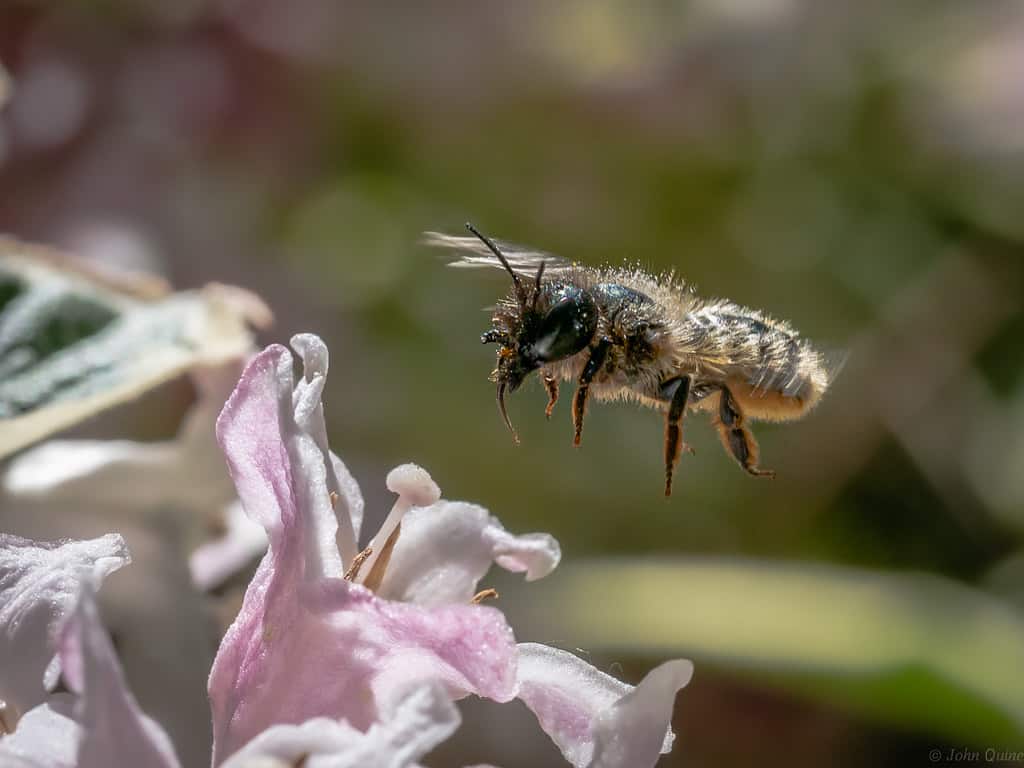Mason bees are from the genus Osmia and dominate a large section of the northern hemisphere. They typically resemble large flies with their dark and shiny abdomens but are also infamous for their docility and gentle stings. Those who have been stung by mason bees report that it hurts no more than a mosquito bite.
These friendly bees include over 350 species within the genus, all of which are solitary. Ecosystems depend on these little pollinators, and their unique capabilities are hugely important to the environment.
Generalist pollinators
Consider the bumblebee: along with carpenter bees and many other bee species, they are unique in that they use “buzz pollination”, which involves grabbing hold of a flower and emitting a high frequency to dislodge pollen from the flower’s anthers. Many plants including tomatoes and eggplants rely on these types of pollinators, but most flowers can be visited by any visiting insect. Mason bees are generalist pollinators; they can’t pollinate a tomato flower but they will interact with any flower in sight to maximize on the pollen they bring home.

Great at pollinating
Aside from being able to visit most flowers, mason bees have an underbelly covered in scopa, which are special hairs that pollen latches on to. Honey bees lack these scopa hairs, instead pushing pollen to their hind legs into a pollen basket, which aids in the long flight home. For the humble mason bee, allowing her body to get covered in pollen grains means that with every flower she visits, she picks up and deposits a lot of pollen. As a result, plants have a much higher chance of being pollinated by a visiting mason bee than they do a honey bee, for instance.
Small foraging range
One of the aspects that make mason bees hugely important is their small range in which they forage; around 100 metres from the nest. Staying close to home is important not only because the mother bee needs to protect her nest, but also because the further she flies away to collect pollen, the more will fall off in the flight back home. By sticking close, she can make shorter trips with more food on her scopa hairs.
Used in orchards
The small range of the mason bee, alongside her pollinating capacity makes it the ideal bee for orchards. The thousands of blooms that appear on fruit and nut trees require a lot of cross pollination for maximum fruit set. The mason bee will pollinate every flower in sight, visiting from tree to tree and collecting as much pollen as possible for her nest. While honey bees are meticulous in that they like to visit every flower on a branch before moving on, mason bees have no preference and will simply zip back and forth, making them incredible cross pollinators. As well, the honey bee has those aforementioned pollen baskets, so less pollen is dropped off on each flower they visit, while bees with scopa hairs deposit much more pollen, increasing the likelihood of pollinating the bloom.
Can work in adverse weather
Since Osmia species are widespread across the northern hemisphere, most of the species are accustomed to cooler climates and harsh weather. Honey bees rely on the sun to navigate home, which is especially important when they are flying several kilometres away. Mason bees don’t need to worry too much about finding their way home when it starts to get dark since their foraging radius is much smaller, and she can zip home quickly at night to protect the nest. They begin their day earlier and end it later than honey bees, and can work in light rain. Honey bees don’t like to work in rainy weather, as rain droplets can damage their wings. While the same is true for mason bees, they are stronger and can withstand some light droplets.
